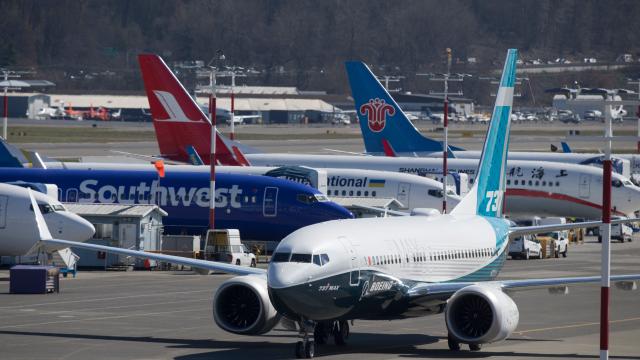US National Transportation Safety Board investigators have possibly found a major clue as to why a Boeing 737 engine exploded, sucking 43-year-old passenger Jennifer Riordan partially out of a window shredded by shrapnel, resulting in her death.
NTSB chairman Robert Sumwalt told reporters that one of 24 titanium fan blades in an engine on Southwest Airlines flight 1380 snapped, per Business Insider. An examination of the catastrophically failed engine concluded that at the point where the 13th fan blade broke off, it exhibited signs of metal fatigue, a condition where continuous physical stresses have degraded the strength of metal components.
What a flight! Made it!! Still here!! #southwest #flight1380 pic.twitter.com/Cx2mqoXVzY
— Joe Marcus (@joeasaprap) April 17, 2018
According to Business Insider, the jet involved in the incident was delivered to Southwest Airlines fresh off factory lines in 2000, and the CFM56-7B turbofan engine that failed is a common model in thousands of aircraft:
The Boeing 737-700 involved in the incident was delivered new to Southwest Airlines in July 2000. The 17.8-year-old jet is powered by a pair of CFM International CFM56-7B turbofan engines. CFM International is a joint venture between GE Aviation and France’s Safran Aircraft Engines.
The CFM56-7B is one of the most popular jet engines in the world and can be found on more than 6,700 aircraft around the world.
Southwest Airlines said it will immediately launch safety inspections of its entire line of Boeing 737s, Business Insider added, while CFM has committed to supporting the investigation. Full answers may not be available until the NTSB concludes an investigation that could take longer than a year.
According to the Seattle Times, the death on the aircraft was the first on a US airline in nine years and Southwest’s first. Investigators were able to identify clues from an engine cowling found approximately 97km from New York’s LaGuardia Airport, where the flight originated. A similar blowout in a 737 engine in 2016 was also determined to be the result of metal fatigue, though that incident was less severe and only depressurized the plane’s passenger cabin rather than sending shrapnel into it.
“There are supposed to be inspections to look for potential cracks,” Sumwalt said, according to the Times. “There need to be proper procedures in place to inspect for them.”
Photos show the damaged engine may have experienced an “uncontained” failure where metal debris exited through the shielded sides of the engine rather than the back, though investigators have not reached any conclusions.
The Times added that the Federal Aviation Administration had prepared a directive that would require mandatory ultrasonic inspections of blades on engines that “have flown more than 15,000 cycles” after the 2016 incident, though the FAA has not yet taken action to put the rule into effect.
“In the notice, the FAA proposed inspections within six months,” an FAA engineer speaking anonymously told the paper. “How can you wait so long to finalise the rule?”
